Sandor Katz’s Fermentation JourneysRecipes, Techniques, and Traditions from around the World
From James Beard Award winner and New York Times–bestselling author of The Art of Fermentation: the recipes, processes, cultural traditions, and stories from around the globe that inspire Sandor Katz and his life’s work—a cookbook destined to become a modern classic essential for every home chef.
“Sandor’s life of curiosity-filled travel and exploration elicits a sense of wonder as tastes, sights, and smells leap off the pages to ignite your imagination.”—David Zilber, chef, fermenter, food scientist, and coauthor of The Noma Guide to Fermentation
For the past two decades, fermentation expert and bestselling author Sandor Katz has traveled the world, both teaching and learning about the many fascinating and delicious techniques for fermenting foods. Wherever he’s gone, he has gleaned valuable insights into the cultures and traditions of local and indigenous peoples, whether they make familiar ferments like sauerkraut or less common preparations like natto and koji.
In his latest book, Sandor Katz’s Fermentation Journeys, Katz takes readers along with him to revisit these special places, people, and foods.
This cookbook goes far beyond mere general instructions and explores the transformative process of fermentation through:
- Detailed descriptions of traditional fermentation techniques
- Celebrating local customs and ceremonies that surround particular ferments
- Profiles of the farmers, business owners, and experimenters Katz has met on his journeys
It contains over 60 recipes for global ferments, including:
- Chicha de jora (Ecuador)
- Misa Ono’s Shio-koji, or salt koji (Japan)
- Doubanjiang (China)
- Efo riro spinach stew (Nigeria)
- Whole sour cabbages (Croatia)
- Chucula hot chocolate (Colombia)
Sandor Katz’s Fermentation Journeys reminds us that the magical power of fermentation belongs to everyone, everywhere. Perfect for adventurous foodies, armchair travelers, and fermentation fanatics who have followed Katz’s work through the years—from Wild Fermentation to The Art of Fermentation to Fermentation as Metaphor—this book reflects the enduring passion and accumulated wisdom of
Sandor Ellix Katz is a fermentation revivalist. A self-taught experimentalist who lives in rural Tennessee, his explorations in fermentation developed out of his overlapping interests in cooking, nutrition, and gardening. He is the author of four previous books: Wild Fermentation, The Revolution Will Not Be Microwaved, The Art of Fermentation—which won a James Beard Foundation Award in 2013—and Fermentation as Metaphor. The hundreds of fermentation workshops he has taught around the world have helped catalyze a broad revival of the fermentation arts. The New York Times calls Sandor “one of the unlikely rock stars of the American food scene.” For more information, check out his website: www.wildfermentation.com.
Sandor Katz
An overly productive vegetable garden led Sandor Katz into the world of fermentation. Now five books and close to 30 years later he is considered a leading authority on the subject.
We recently had the pleasure of talking with Sandor Katz about his newest book Sandor Katz’s Fermentation Journeys. He talks to us about all the places fermentation has taken him and the lesions he’s learned along the way.
~~~~~
Booksaboutfood.com(BAF): Well, thank you so much for taking the time to chat.
Sandor Katz: It’s my pleasure.
BAF: Well, I guess I’d like to start with a philosophical question if I may, regarding the title of your book.
Sandor Katz: Okay.
BAF: Is fermentation a journey or is there ever a destination?
Sandor Katz: I mean, I would say fermentation is a journey for sure. I mean, certainly for me, fermentation has been a journey, and for so many people who I’ve met, fermentation has been a journey.
BAF: Would there ever be a final…
Sandor Katz: I mean, I guess I would say that there are many destinations, there’s not a singular destination at all.
BAF: Oh, very good. So no final destination. It’s just an ongoing experience, I suppose.
Sandor Katz: Yeah.
BAF: Well…
Sandor Katz: Well, you know, as fermentation has been for billions of people for thousands of years.
BAF: Fair enough. This book seems like it may have been a bit of a departure for you, in the sense that you were out there in the field, so to speak, not doing it yourself as such, but out there experiencing and traveling and meeting people and doing new things.
Sandor Katz: Well, yeah, yeah, yeah, sure. I mean, that’s definitely true, but then it’s also me coming back and figuring out how to replicate things in my kitchen. So, there’s a lot from my kitchen in the book, and ultimately it’s primarily a how to ferment things yourself book.
BAF: I was intrigued by your destinations. I think some of the places you went were quite interesting. How did you find these people, and how did they trust you to let them into their inner sanctums?
Sandor Katz: Well, I mean, actually, with the major exception of my travels in China and Burma, they found me. I didn’t have to find people. So, almost all of the places that I’ve traveled to since I started doing this work with fermentation has been to places where I have been invited to teach. And so, the way I found people who shared my excitement about fermentation is that they’re the people who reached out and found me.
BAF: Well, I think that sounds quite exciting just to… It’s like with anything, you’re meeting people somewhere else who are doing, you share of a shared interest, but a completely different way of approaching it and doing it, and the ingredients. That to me seems like a very exciting, rewarding experience.
Sandor Katz: Absolutely.
BAF: Did you have any interesting discoveries as you traveled? Was there anything that just, for lack of a better expression, blew your mind, so to speak, that this is something just completely out of the box for you?
Sandor Katz: Well, sure. I mean, a few things. I mean, one was running into familiar ferments in unexpected places, such as learning about ways in which a natto-like fermentation is used in China. And I think that there was a bit of linguistic confusion that caused earlier English language investigators to sort of not realize that doushi, which is Chinese fermented or salted black beans, which are used widely in Chinese cuisine, and typically it’s a soybean with an aspergillus fungus grown on it, and then brined, and then partially dehydrated.
But in this village in Guizhou that we visited, they invited us to help them make what they described as doushi, and we were expecting that, but once we walked into the space, it was unmistakable to us that they were working with natto-like bacteria, Bacillus subtilis, and that this word doushi, evidently in different cultural contexts or different regions, could mean one thing or another thing. And so I was very, very surprised and excited to find something substantially similar to natto being prepared in China, which I didn’t expect at all.
So that’s one example of a surprise. I mean, really, the most mind boggling thing that I’ve seen was actually in Colombia, where I was introduced to tucupi, which is an Amazonian ferment of the toxic juice that’s been squeezed out of cassava. And so they ferment it so that the cyanide compounds that make it toxic are broken down and make it safe. And then they cook it down into just the most delicious tarry paste that’s used as a condiment.
BAF: I always wonder, it’s fascinating, but I do always wonder when they, I would like to know the journey from the dish that you had, how they got there, how did they realize to get rid of the cyanide?
Sandor Katz: Mmm.
BAF: You know, maybe there’s a few mishaps along the way, lost a few members?
Sandor Katz: Well, I mean, the thing about the origins of fermented foods, and this would go for virtually every fermented food or beverage that we know, is that all we can do is speculate, because there’s no record of the origins of them. So, there’s a huge amount of mythology and speculative literature, but that’s really all we can do is speculate.
BAF: So you mentioned discoveries, things that surprise you. Have you ever come across something which I guess confused you in the sense that, was this fermentation or was it not, or is there anything that you were found yourself on the fence about?
Sandor Katz: Well, sure. I mean, there’s all kinds of processes that people call fermentations, and then once you look a little bit more closely, like what’s going to… The first thing that I thought of is black garlic. Have you had black garlic? It’s incredibly delicious.
BAF: Yes, it is.
Sandor Katz: Yeah. And so, I mean, it’s basically garlic that’s held at 140 degrees Fahrenheit, 60 degrees Celsius, for some weeks, and that leads to a very, very slow caramelization, and makes it really delicious. And I’ve frequently seen that described as a fermentation process, and I would say that that’s more like a very slow cooking process. I mean, there certainly are organisms that can thrive at 140 degrees Fahrenheit. There’s enzymes that can really optimize at that temperature. But I think in the case of black garlic, what we’re getting is like a slow caramelization more than a fermentation.
But I think that it’s important to recognize that fermentation is not a unified set of practices that are just sort of applied in different ways around the world. I mean, it’s very much disparate practices that arose independently, and it’s only in the context of the last 150 years, and having a scientific definition of fermentation, that there’s been an objective way to determine, okay, well, what processes constitute fermentation and what don’t? And there is a certain amount of debate about that.
And, you know, there are a lot of processes where, let’s say, fermentation is not the primary process that’s going on, but it’s happening in an incidental way. So let’s say, the curing of a ham. The primary way that the meat is being preserved is using salting and drying. But in the course of that, there’s a certain amount of incidental fermentation that’s occurring, and some of the distinctive flavors that arise are as a result of fermentative processes, even if the major preservation of the meat is accomplished primarily through these other means.
BAF: But I mean, you cut it off, but you don’t eat it. Did you have an overall goal or plan for the book when you started, you envisioned it? I guess maybe I should first ask, how did this whole project come together?
Sandor Katz: Well, I mean, I would say that, as I found myself getting invited to further and further away places to teach about fermentation, and of course simultaneously learn about fermentation and expand my repertoire and my experience, I definitely had the idea that eventually I should write another book about foods and beverages that I was learning about in my travels. But well, two things. I mean, I have a long list of places I haven’t been to that I’m interested in specific fermentation processes that I’m aware of it at some level. And my life was incredibly busy. I was traveling a third of the time, doing all this teaching when I was at home. I was doing, planning and prepping for the next trip, and tending my garden and tending my ferment.
So, it was very much an abstract thing that I would eventually get around to doing. And in 2020, I had plans to travel to Peru and Iceland and Taiwan and Northwestern Canada, and when my plans got canceled, like everyone else in the world’s plans, it just occurred to me that since everything I was planning to do got canceled, maybe this was my opportunity to write this book about the foods and beverages that I’ve encountered in my travels. Even if I haven’t been everywhere, I guess I’ll never feel like I’ve been everywhere. So the opportunity presented itself, and I decided to sit down and use my newfound free time to write this book that had been on my mind.
BAF: I hear that a lot about people who’ve written books this past year. It’s, you know, “I hadn’t planned on doing it, but I had nothing else to do.”.
Sandor Katz: Yeah.
BAF: It’s almost, how would you describe it? It’s part travelogue, there are some recipes in it, it’s instructional, it’s a very interesting, eclectic mix of everything, a little different from things you’ve done in the past, it seems.
Sandor Katz: Well, I mean, I would say that all of my books have been a kind of eclectic mix. And, I mean, each of them is a practical how-to book about food. And I think of this book primarily as that, but it also has all these stories, and it has stories about ferments that probably most people are not going to be able to make because they don’t have maguey plants growing in their yard, or the substrates for other, very particular ferments from around the world that I’ve encountered. But to the degree possible, I’ve tried to include recipes, and make these things approachable for home experimentalists such as myself who are interested in trying different kinds of ferments. So, that’s the primary objective.
And then, I’m always interested, beyond the nuts and bolts of how the ferment is made, cultural context for them, and how they’re eaten and enjoyed, stories about them. So, I’ve certainly tried to intertwine the practical fermentation information with context of how the foods are produced and enjoyed.
BAF: You certainly built a wonderful career on fermentation. Is that something you ever envisioned?
Sandor Katz: No, no, I mean, that was like an utter, utter surprise, and a lovely surprise. I mean, I really feel like I fell into this work as a fermentation revivalist, and I love doing it, and it seems like there’s a hunger for this work, but certainly, I mean, I sort of fell into writing my books. I mean, let’s see. I mean, I moved from New York City to rural Tennessee in 1993. I started keeping a garden. Although I had loved certain fermented foods for my entire life, and even had started to think about eating them as a conscious health practice, I had no specific reason to learn how to make my own until I had a garden.
So when I moved from New York to Tennessee in 1993, and I started a garden, I was such a naive city kid. It had never occurred to me that in a garden, all the cabbage would be ready at about the same time. So when I was confronted with this rather obvious reality of agricultural cycles, we had a nice bed of cabbage and I decided that I should figure how to make sauerkraut. And I knew that sauerkraut had something to do with preserving cabbages. I knew I liked sauerkraut. I looked in The Joy of Cooking. I learned how to make sauerkraut from The Joy of Cooking.
And interestingly, just a couple of weeks ago, when I was doing some book launch events in Portland, Oregon, I met the new generation of The Joy of Cooking, Megan and John, who edited the most recent version of it. And they sent me a copy of the new version, and they cited me, and they have a whole section about fermentation. So that was very gratifying to see that The Joy of Cooking, this ultimate American kitchen resource that almost everybody has in their kitchens, was my gateway into fermentation, and now they’ve sort of expanded to incorporate more fermentation. So that was very gratifying.
But anyway, that’s how I fell into it, was just trying to make practical use of the bounty of the garden. And it was very much like a personal obsession that I shared or inflicted upon my friends, until I got invited to teach. And five years later in 1998, after I had gotten a reputation and a nickname of Sandor ‘Kraut’, I got invited to teach a sauerkraut making workshop at a food skillshare event, and it was really that first time teaching that sort of clued me into how much anxiety people project on this process. And all these people who had just shredded vegetables with me and stuffed them in jars are holding up their jars of vegetables and saying, “But how do I know that I have good bacteria growing in here and not something dangerous that might make me sick or even kill somebody?”
So, a lot of people just project this anxiety. And so that was interesting to me, and that forced me to do more reading and to understand what makes these foods so safe. And really, it turns out that fermented vegetables are among the safest foods we know, and statistically speaking, vegetables become much safer after you ferment them than they are when they’re raw. And even if there happened to be cells of bacteria that could make us sick, the fermentation really favors lactic acid bacteria as they acidify the environment. Even if there are some pathogens present, they’re destroyed by the acidity. So it’s just very convenient for us.
But anyway, I had to learn more about the process in order to be able to demystify for people, and this became an annual teaching event that I really looked forward to. And then I had a conflict in 2001, and so I spent a month writing down all my fermentation recipes, and I wrote this little ‘zine’ with no graphics. And then that’s what made me realize this is something interesting that I have a lot to say about, and even more, I have a lot to learn about. So that led me into Wild Fermentation, and my book tour never ended. I just discovered that there’s so much hunger for information about fermentation, by the time I got home from my book tour, I was getting emails inviting me to come present at conferences and such.
So, my life as a fermentation revivalist is really just like my book tour from 2003 that never ended, because there just continues to be so much interest in fermentation. And I have a few different ideas about why there is this explosion of interest in fermentation.
BAF: So essentially, you’re on an 18 year long book tour so far.
Sandor Katz: Yeah. So now with my fifth book coming out, the book tour just never quite stopped.
BAF: I just love that circle of life story regarding The Joy of Cooking. Maybe I should skip ahead and ask you what’s next.
Sandor Katz: Well, I don’t know. I’m about to do my first international traveling since COVID, and I’ll be going in February to teach in Iceland and then the Faroe Islands. So I’m super excited to go to those places where fermentation historically has been extremely important in people’s lives. And I also certainly hope to learn on those trips. But I’m just continuing my work as a fermentation educator, and certainly, COVID put an end for a while to the in-person things, but I’ve started doing some in-person things, and I’ve certainly, in the context of COVID, done a huge amount of online teaching. So, my project of fermentation education continues and is ongoing. And I think that there continues to be a great hunger for information about fermentation.
And it turns out there’s a ferry from Iceland to the Faroe Islands. So I’m going to be riding a 19 hour ferry through the North Atlantic in February. That’s kind of exciting!
~~~~~
© Booksaboutfood.com 2021
“Sandor Katz transposes his obsession with one of mankind’s foundational culinary processes into a cookbook-cum-travelogue.”—The New York Times
“Fascinating and full of delicious stuff. . . . I’m psyched to cook from this book.”—Francis Lam, The Splendid Table
“Sandor Katz’s Fermentation Journeys highlights the personal anecdotes that ignited his passion for fermentation. We are transported to each remote village through him and introduced to the people behind the recipes he has shared. Fermentation is an important method of food preservation that brings unique textures and flavors to many dishes. Sandor has managed to expose the ancient techniques behind the practice while providing approachable recipes for the home cook.”—Daniel Boulud, chef/restaurateur, author of Letters to a Young Chef
“In his Fermentation Journeys, Sandor Katz’s life of curiosity-filled travel and exploration elicits a sense of wonder as tastes, sights, and smells leap off the pages to ignite your imagination. This book doesn’t simply serve as a near-encyclopedic travelogue to countless ferments from around the world. It cements the grandfather of the fermentation revival as a great naturalist of our time; an enthusiastic adventurer seeking out not giant beasts, but microscopic ones, through friendships, community, recipes, and more-than-human stories.”—David Zilber, chef, fermenter, food scientist, and coauthor of The Noma Guide to Fermentation
“Sandor Katz has done it again. This time he learns alongside all of us as we travel the world with him and study centuries-old cultural traditions of all things fermented.”—Dan Barber, chef/co-owner, Blue Hill and Blue Hill at Stone Barns; author of The Third Plate
“When I absentmindedly wandered into Sandor Katz’s session at the IACP Conference in San Francisco in 2012, a whole new world opened up to me. Ever since then I’ve been spreading the gospel and devouring every snippet of information. This gem of a book, detailing Sandor’s ‘fermentation journeys’ around the world, is a dream come true for this Irish fermentation nerd.”—Darina Allen, Ballymaloe Cookery School
“More than just fermentation cookbook meets travel journal, Sandor Katz’s Fermentation Journeys is a love letter to the world fermentation community. Like threads of forest mycelium linking underground communication networks, this worldwide community shares knowledge and a belief that fermentation can heal. As Katz documents recipes and techniques, he focuses on the story of place and the individuals that shared their traditions or ideas. In this way, it is a book the fermentation community built.”—Kirsten K. Shockey, author of Homebrewed Vinegar and coauthor of Miso, Tempeh, Natto & Other Tasty Ferments
“Sandor Katz takes us on a wild ride around the globe as he discovers a global perspective on fermentation. He proves that we are all hard-wired to crave fermented foods, no matter where we live. It’s fascinating to see how fermentation brings us all together and inspires and informs our own traditions back home. Buy the ticket, take the ride, and hang on tight.”—Sean Brock, chef, author of South and Heritage
“I’ve learned more from Sandor Katz over the years than from any other culinarian that I’ve worked with or studied under. This book takes you on a mystical and magical journey through the seemingly endless rabbit hole that is fermentation. From koji to chocolate sauerkraut cake to doubanjiang, Sandor not only shows us how to make these delicious foods but also thoroughly explains the how’s and why’s behind them. Get your crocks and salt ready to start fermenting!”—Jeremy Umansky, chef/owner, Larder Delicatessen & Bakery; coauthor of Koji Alchemy
“Sandor Katz opens our eyes to the generous humans around the globe sharing their cultures through the lens of fermentation. Each vivid story transports you to moments of discovery and wonder, sparking memories of a crafty family member who makes something delicious, pulled from the depths of their home, that you can’t get enough of. Multiply that experience one hundred times and you’ll begin to understand the power of this book.”—Rich Shih, coauthor of Koji Alchemy
“What incredible adventures around the world! Many of the ferments featured here, both traditional and experimental, will be unknown to a majority of readers. I predict Sandor’s book will inspire yet another wave of fermentation enthusiasts. The recipes here will get us started.”—Ken Albala, professor of history, University of the Pacific
“If you need a reminder of the transformative powers of fermentation, its unifying capacity across cultures, and its pervasiveness on our planet, buy this book.”—Pete Halupka, co-owner, Harvest Roots Ferments
“Sandor Katz documents the joys, quirks, and health benefits of fermentation in all its global variety. This encyclopedic cookbook-cum-travel memoir provides 60 recipes that are seeded within a broader discussion of regional techniques and traditions, peppered with profiles of the experts and eateries discovered by Katz on his voyages. . . .This international romp is funky in the best of ways.”—Publishers Weekly
“Part travelogue, part cookbook, part chemistry experiment, Katz’s new book is a fascinating look at fermented foods the world over, and it aims, always, to be a respectful one.”—BookPage


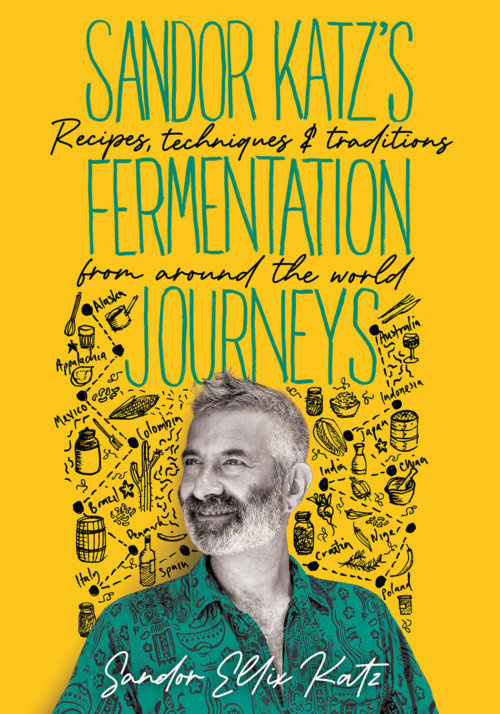


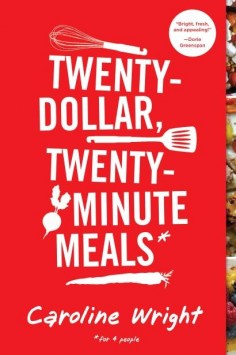

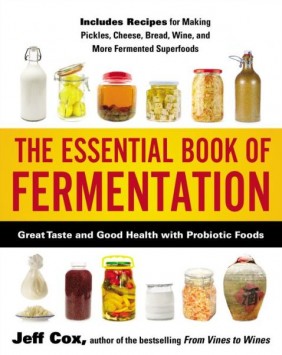
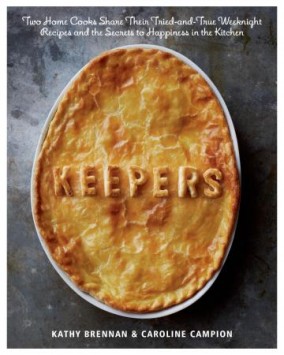
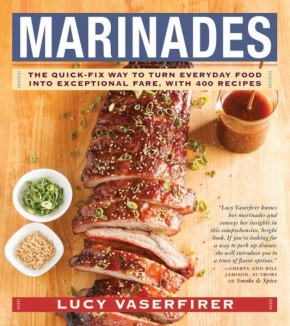

Leave a Reply